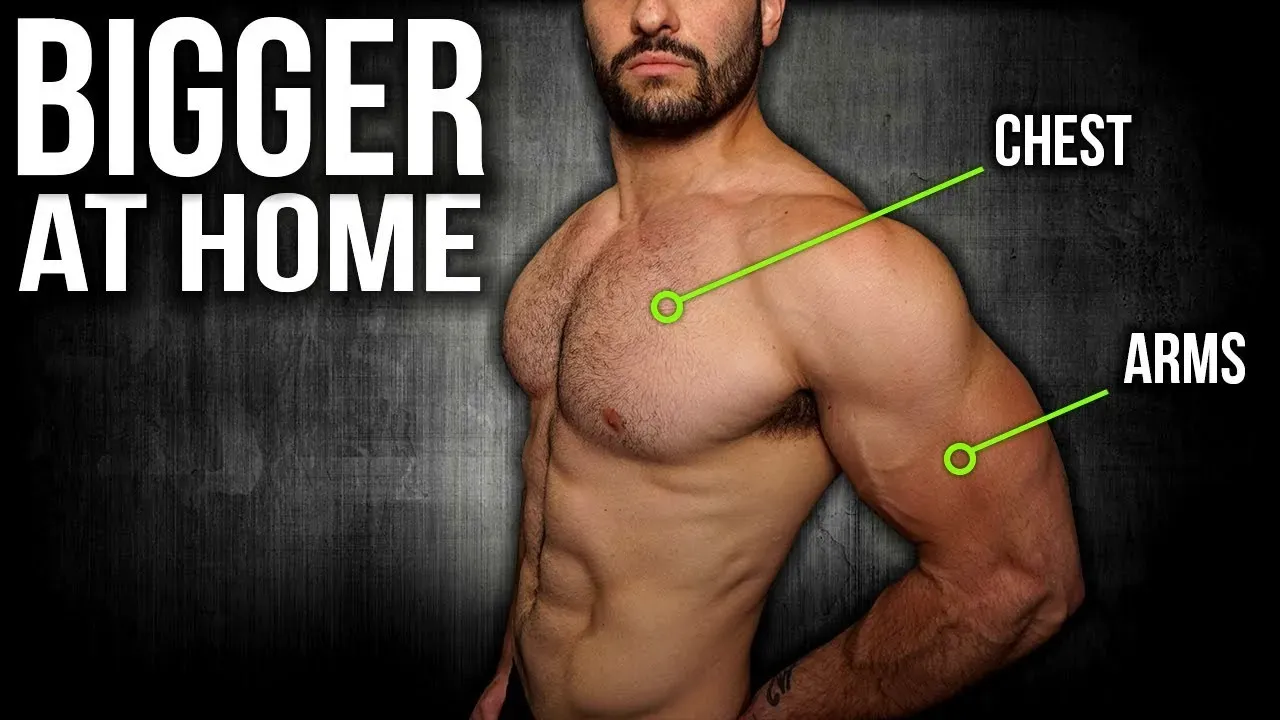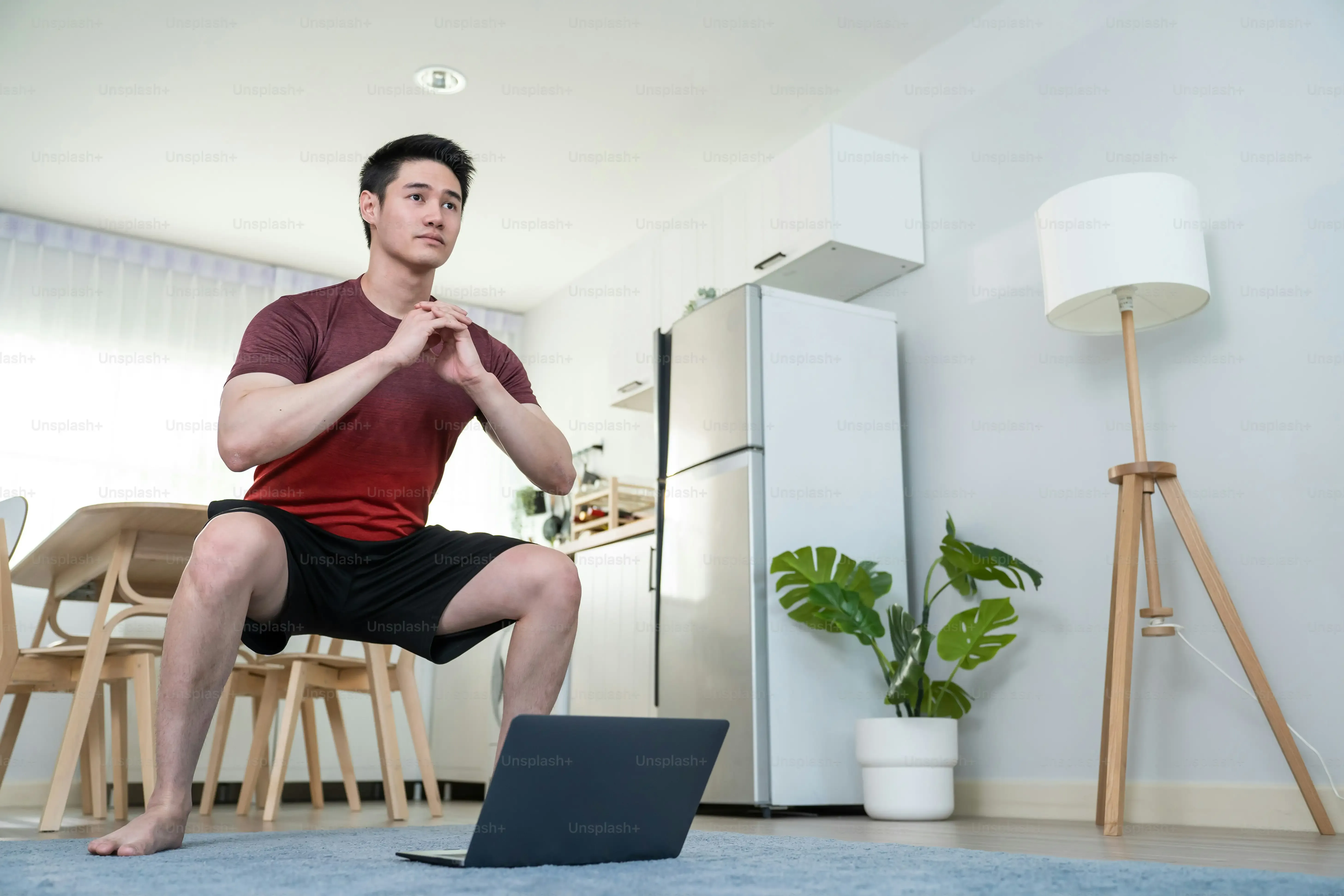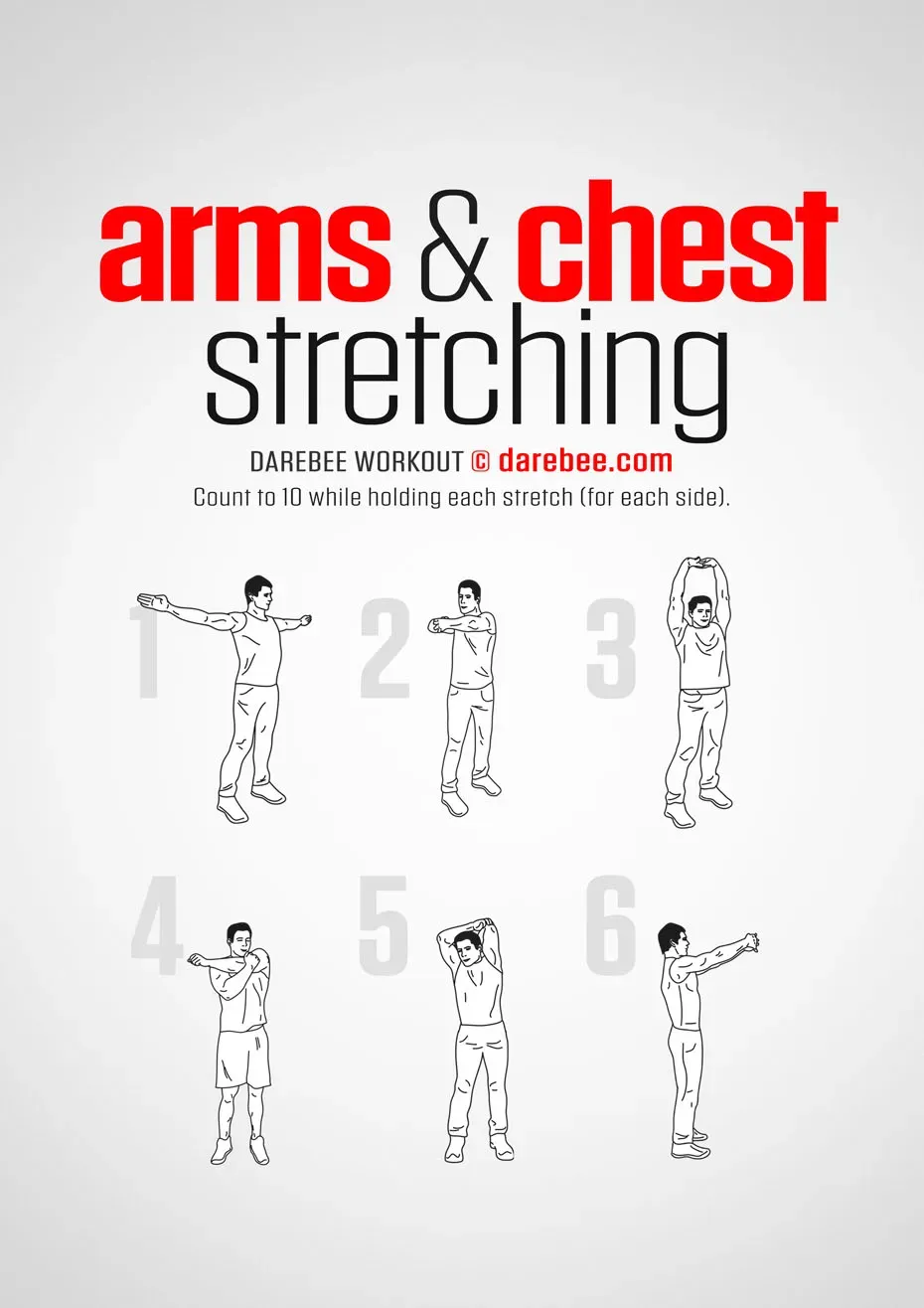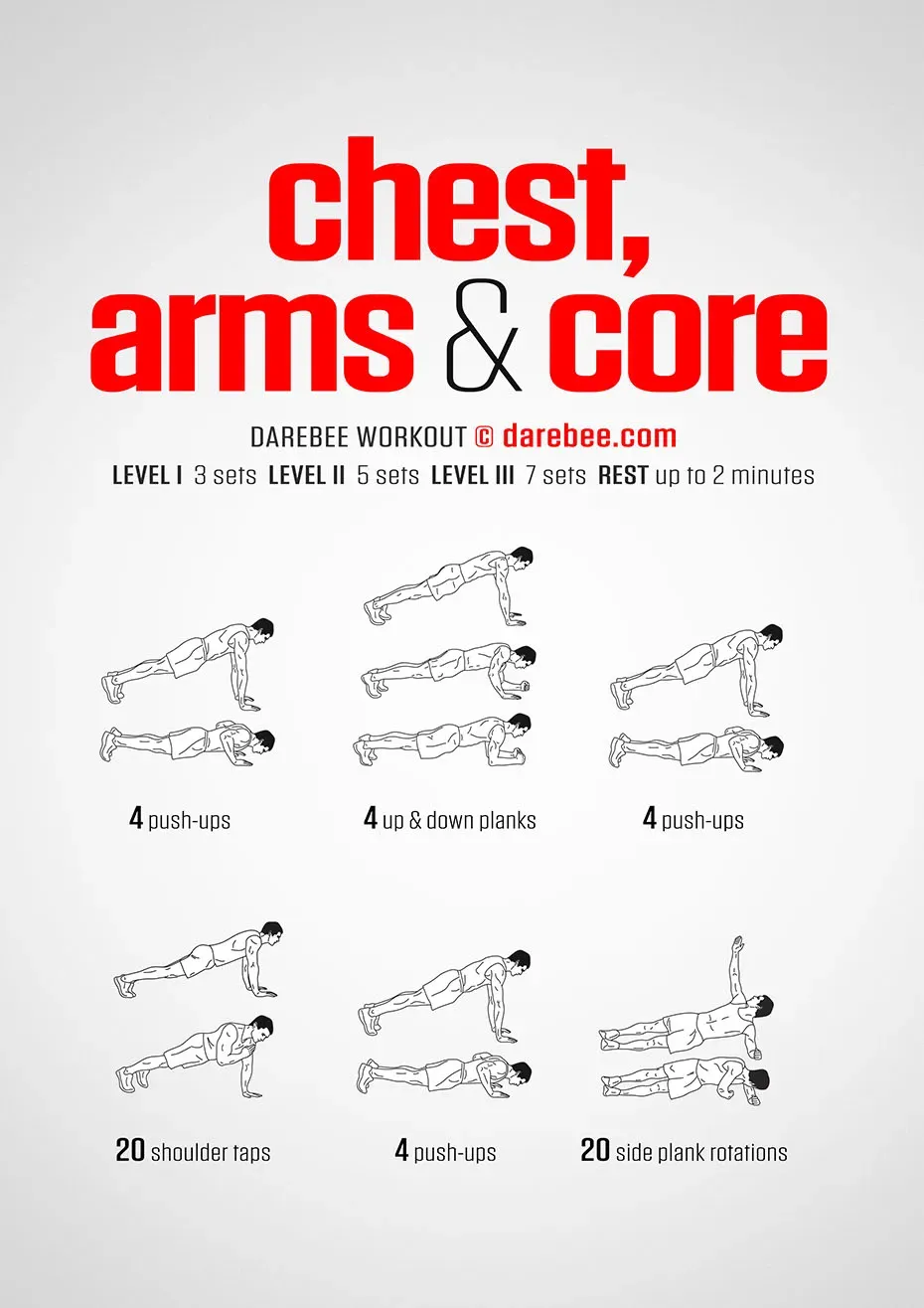Table of Contents
Let's be honest. Life gets busy. Gym memberships collect dust, commutes eat up time, and sometimes you just can't face leaving the house. But that doesn't mean ditching your fitness goals, especially when it comes to building a strong chest and defined arms. Forget the racks of weights and the crowded benches. You can absolutely get a killer chest and arms workout at home with little to no equipment.
Why Bother with a Chest and Arms Workout at Home?

Why Bother with a Chest and Arms Workout at Home?
Alright, let's cut to the chase. Why on earth would you bother with a chest and arms workout at home when the gym beckons with its shiny machines and questionable locker room smells? Simple. Life happens. Maybe your schedule is tighter than a drum, maybe the thought of traffic makes you want to curl up and nap, or maybe you just prefer the comfort of your own space (and not having to wait for the guy doing bicep curls in the squat rack). Doing chest and arms at home isn't a compromise; it's a smart play. You build functional strength you can actually use – pushing open stubborn doors, carrying groceries, or just looking decent in a t-shirt – all on your terms, saving time and money. Plus, mastering bodyweight movements builds a different kind of strength, one based on control and stability, which is pretty cool when you think about it.
Key Exercises for Your Home Chest and Arms Session

Key Exercises for Your Home Chest and Arms Session
Push-Up Power: Your Chest's Best Friend
Alright, let's talk brass tacks. The absolute foundation for any effective home chest routine? The push-up. Yeah, I know, revolutionary. But hear me out. This isn't just about dropping and giving twenty shaky reps. It's about mastering the movement. A proper push-up hits your chest, shoulders, and triceps – a solid chunk of your upper body right there. Keep your body straight, like a plank, lower your chest towards the floor until it's just above it, and push back up. Control is key. Don't let your hips sag or your butt stick up like a confused mountain peak. If full push-ups are too tough right now, no shame in starting on your knees or against a wall. The goal is good form, not just completing reps.
Triceps Torture (the Good Kind)
Now for the arms, specifically those horseshoe muscles on the back – the triceps. They're crucial for pushing movements and add serious definition. A fantastic bodyweight move here is the dip. You can use a sturdy chair, the edge of your couch, or even the side of your bed. Sit on the edge, hands gripping beside your hips, slide your butt off, and lower yourself down by bending your elbows. Keep your back close to the chair. Push back up using those triceps. If your legs are straight out, it's harder. If your knees are bent and feet are closer to the chair, it's easier. Again, focus on control through the full range of motion.
- Elevated Push-Ups (hands on a chair or counter)
- Knee Push-Ups
- Incline Push-Ups (feet on a chair)
- Decline Push-Ups (hands on the floor, feet elevated)
- Close-Grip Push-Ups (hands closer than shoulder-width for more triceps)
- Chair Dips (legs bent or straight)
- Bench Dips (using two stable surfaces)
Bicep Builders Without the Barbell
biceps. Everyone wants those peaks, right? While bodyweight options are a bit more limited for direct bicep work compared to chest and triceps, you're not totally out of luck for your chest and arms workout at home. The most common go-to is the inverted row, assuming you have something sturdy to hang under – like a strong table or a low bar. Lie on your back under it, grab the edge, and pull your chest towards the object, squeezing your shoulder blades and engaging your biceps. The lower the object, the harder it is. Another option? Grab some heavy water bottles, detergent jugs, or resistance bands if you have them, and do curls. It's not fancy, but it works the muscle if you focus on the contraction.
Structuring Your Effective Chest and Arms Workout at Home

Structuring Your Effective Chest and Arms Workout at Home
so you've got the moves down – push-ups, dips, maybe some inverted rows or makeshift curls. Now what? Just doing random sets whenever the mood strikes isn't going to cut it for a real chest and arms workout at home. You need structure. Think of it like building anything worthwhile; you need a plan, not just a pile of materials. A solid structure ensures you hit the muscles effectively, manage fatigue, and actually make progress instead of just spinning your wheels. You could go for a simple circuit, moving from one exercise to the next with minimal rest, keeping the intensity up. Or, you might prefer a more traditional approach, doing sets and reps of one exercise before moving to the next. It really depends on your goal and how much time you have. The key is consistency and progression.
- Option 1: Circuit Training (e.g., Push-ups > Dips > Inverted Rows > Rest > Repeat)
- Option 2: Straight Sets (e.g., 3 sets of Push-ups, then 3 sets of Dips, etc.)
- Option 3: Supersetting (e.g., Pair a chest exercise with a triceps or biceps exercise)
Boosting Your Chest and Arms Workout at Home with Minimal Gear

Boosting Your Chest and Arms Workout at Home with Minimal Gear
so you've nailed the basic bodyweight moves. Push-ups are feeling solid, dips are doable. How do you keep making progress and avoid hitting a plateau without buying a whole home gym setup? This is where minimal gear shines for your chest and arms workout at home. You don't need much. A resistance band, maybe a sturdy backpack, or even just elevating your hands or feet can dramatically change the difficulty and target muscles differently. Think about adding resistance bands to your push-ups or looping them around your feet for inverted rows. Load up that backpack for weighted push-ups or dips. Small adjustments, big impact on challenging your muscles in new ways.
- Resistance Bands: Add tension to push-ups, rows, and curls.
- Backpack: Fill it with books or weights for added resistance on push-ups or dips.
- Chairs/Sturdy Boxes: Use for incline/decline push-ups or more challenging dips.
- Water Jugs/Detergent Bottles: Improvised dumbbells for curls and overhead presses.
Making Progress and Avoiding Common Home Workout Mistakes

Making Progress and Avoiding Common Home Workout Mistakes
Always Chase the Challenge (Smartly)
so you've been crushing your basic push-ups and dips for your chest and arms workout at home. Feeling good, right? But eventually, just doing the same thing gets easy, and easy doesn't build muscle or strength anymore. This is where progressive overload comes in – fancy term, simple idea. You have to make it harder over time. Since you're not just slapping more plates on a bar, you do it by increasing reps, doing more sets, reducing rest time, or changing the exercise variation to a tougher one. Think about moving from knee push-ups to full push-ups, or from push-ups to decline push-ups. Or maybe you were doing 3 sets of 10 push-ups, now aim for 3 sets of 12, then 15. It's about constantly nudging your muscles outside their comfort zone. That's how they get stronger.
Don't Get Sloppy with Your Form
This is a big one, and easy to fall into when you're just doing a quick chest and arms workout at home without a coach looking over your shoulder. Poor form is the fastest way to invite injuries and the slowest way to see results. Rushing through reps, letting your back arch during push-ups, or using momentum instead of muscle control on dips? That's not working the target muscles effectively, and it's putting unnecessary stress on your joints. Imagine trying to build a house with shaky foundations – it's not going to stand. Slow down. Focus on feeling the muscle work. If you're not sure what good form looks like, watch some reputable videos online. It’s worth the extra concentration.
Mistake | Why It's a Problem | How to Fix It |
|---|---|---|
Skipping Warm-up | Muscles aren't ready, higher injury risk | Do 5-10 mins of light cardio and dynamic stretches (arm circles, torso twists) |
Inconsistent Schedule | Muscles don't get consistent stimulus to adapt | Schedule your workouts like appointments and stick to them |
Ignoring Pain | Could be injury, not just muscle fatigue | Stop the exercise, rest, and assess. Push through discomfort, not sharp pain. |
Listen to Your Body and Recover
Another common pitfall when doing your chest and arms workout at home is thinking more is always better. It’s not. Your muscles don't get stronger *while* you're working out; they get stronger when you're resting and recovering. Pushing yourself every single day without a break, or trying to do maximum reps when you're sore as heck from yesterday, is counterproductive. You need rest days. You need sleep. You need decent food to fuel recovery. Overtraining leads to burnout, fatigue, and increased injury risk. Pay attention to what your body is telling you. If you're feeling genuinely wiped out, take an extra rest day or do some light stretching instead.
Wrapping Up Your Home Chest and Arms Gains
Building a strong chest and arms doesn't require a gym membership or expensive equipment. As we've covered, a focused chest and arms workout at home is entirely achievable and effective. By mastering fundamental bodyweight movements, structuring your sessions smartly, and staying consistent, you can make significant progress. Remember, the best workout is the one you actually do. So, clear a space, put in the work, and start seeing those home-grown results.
